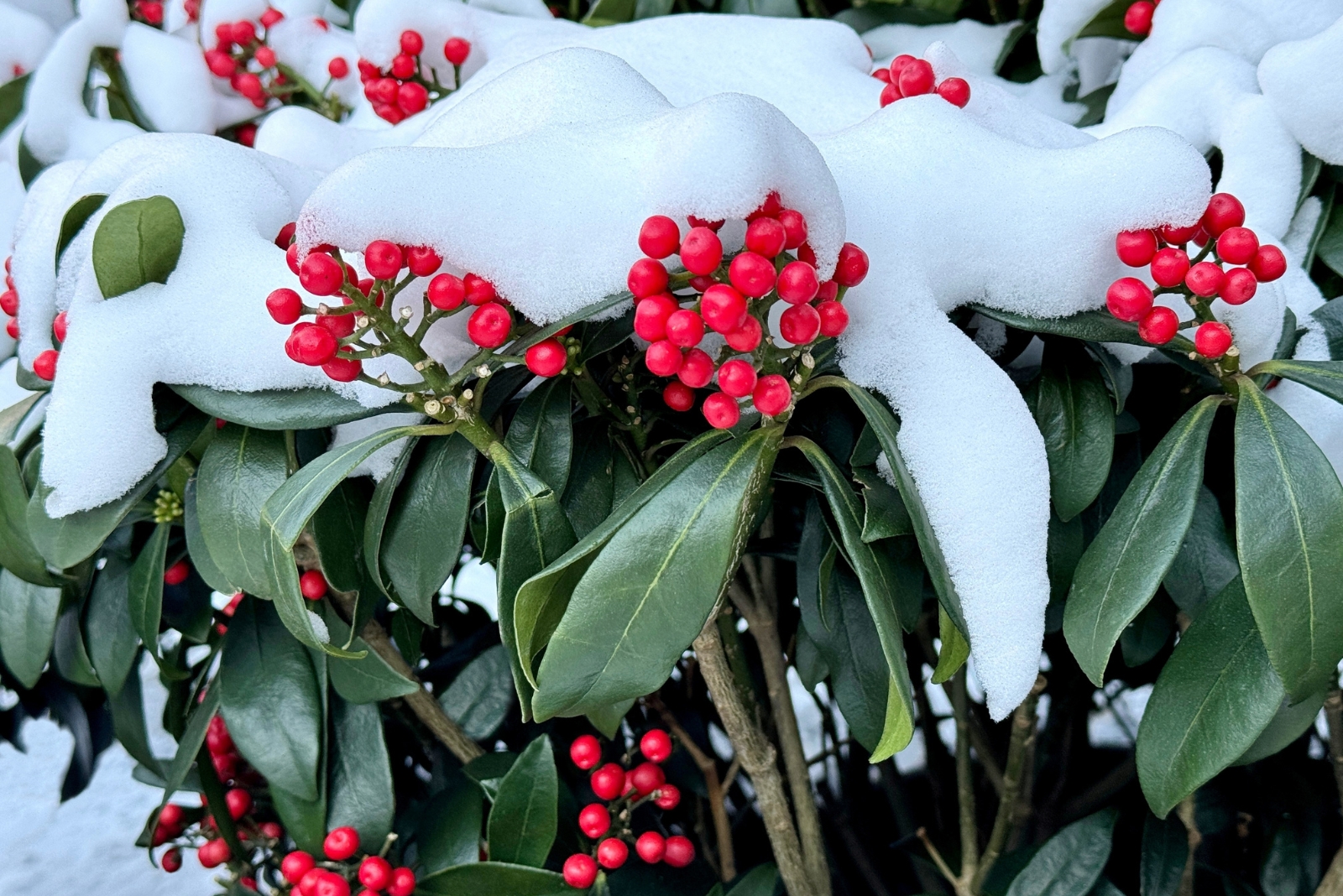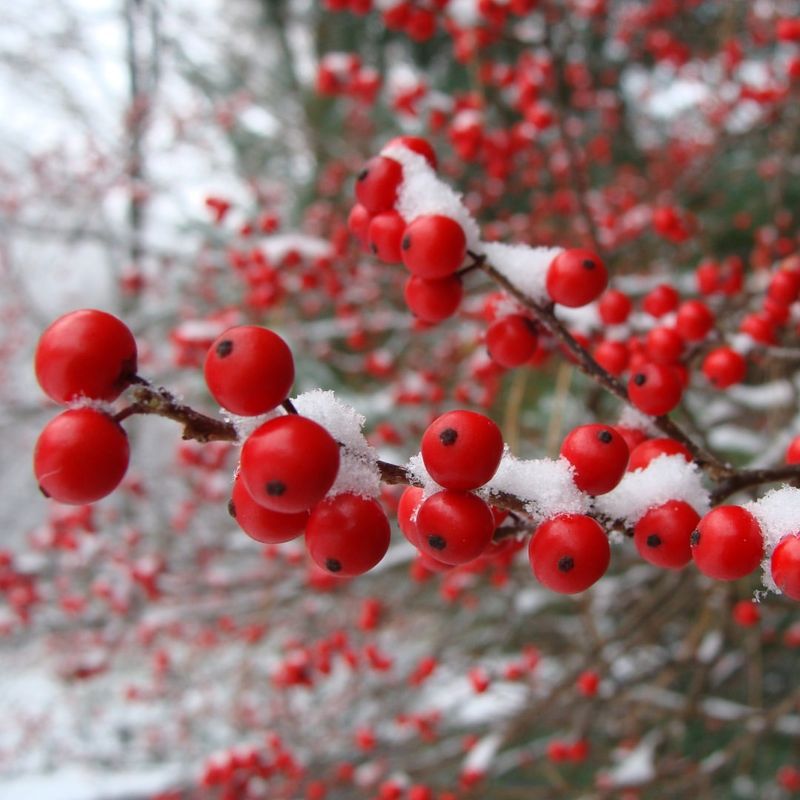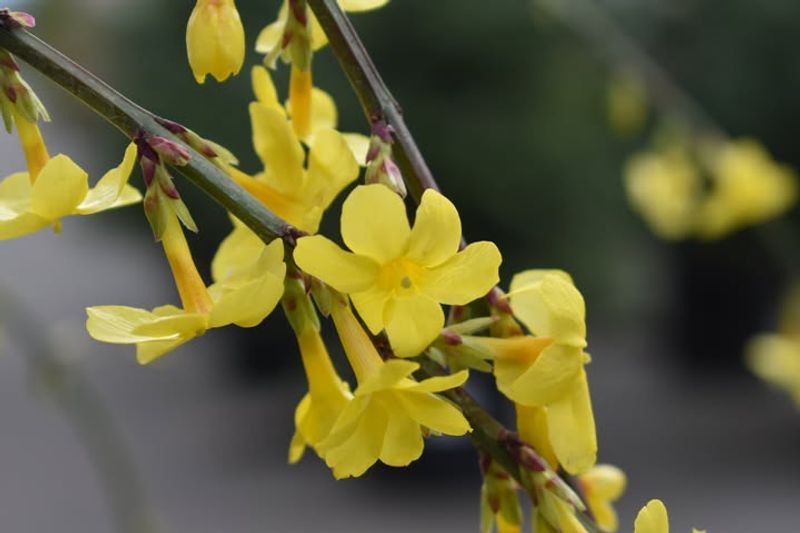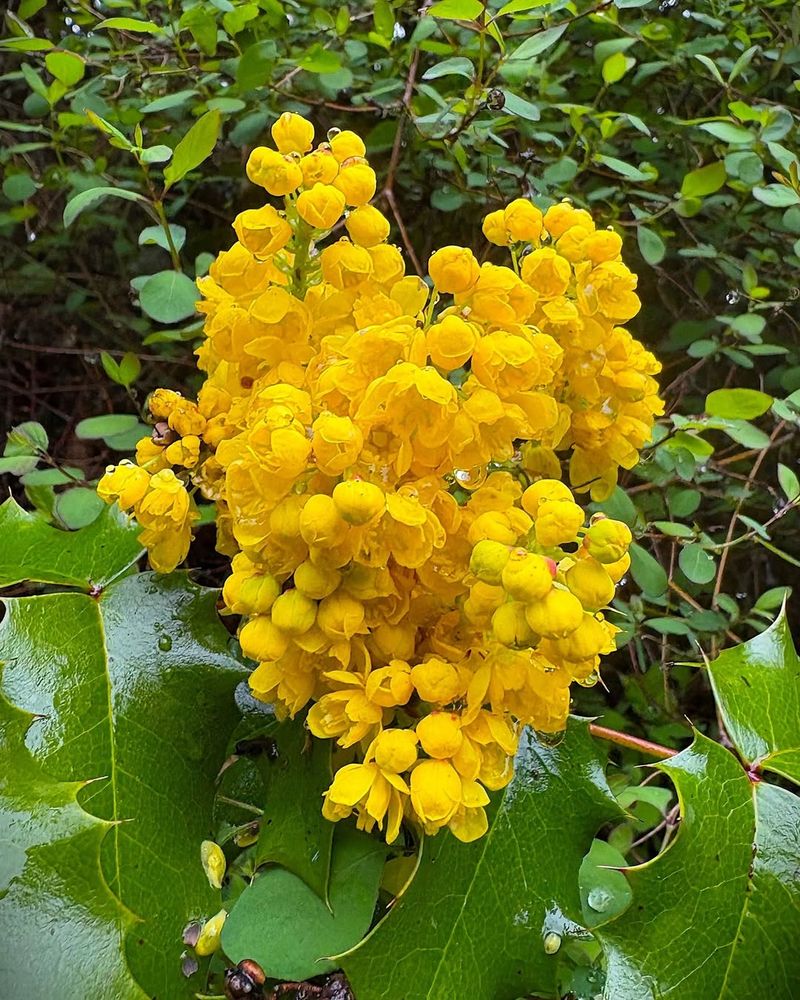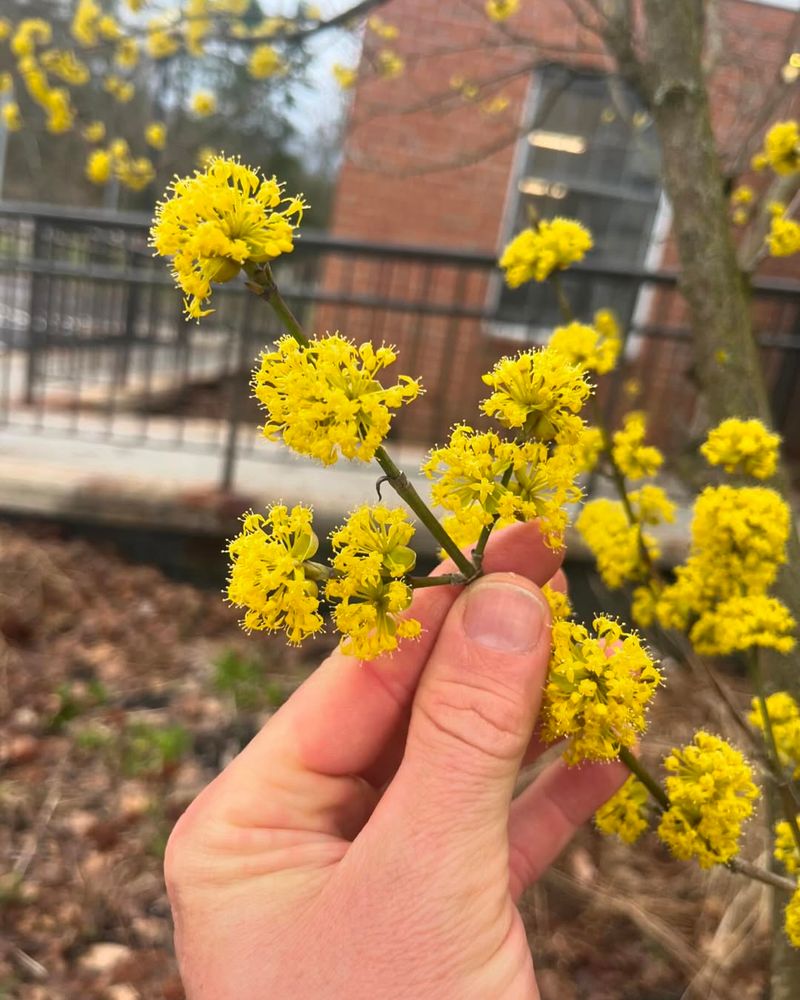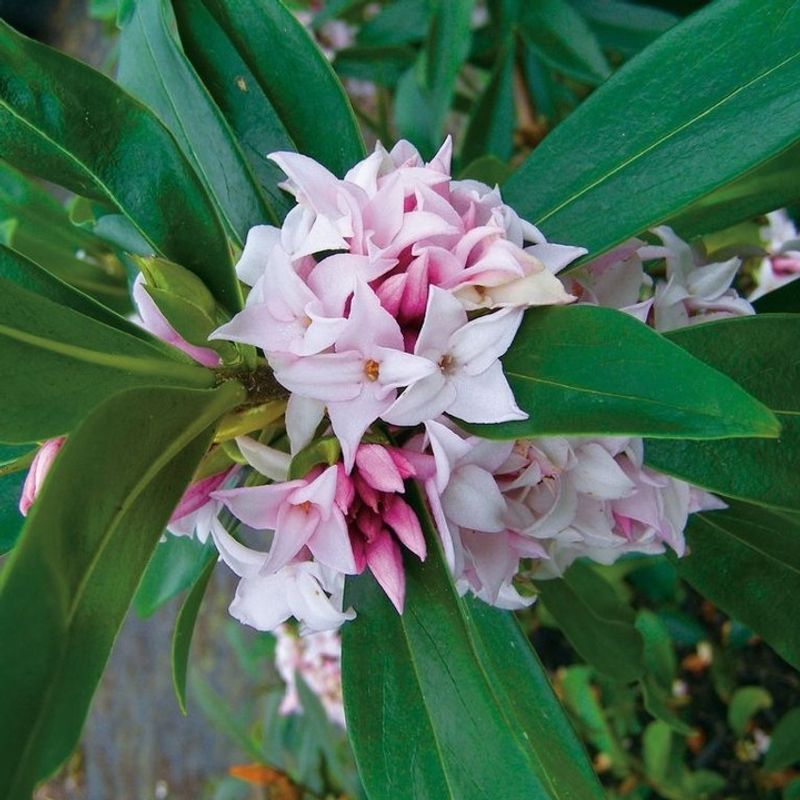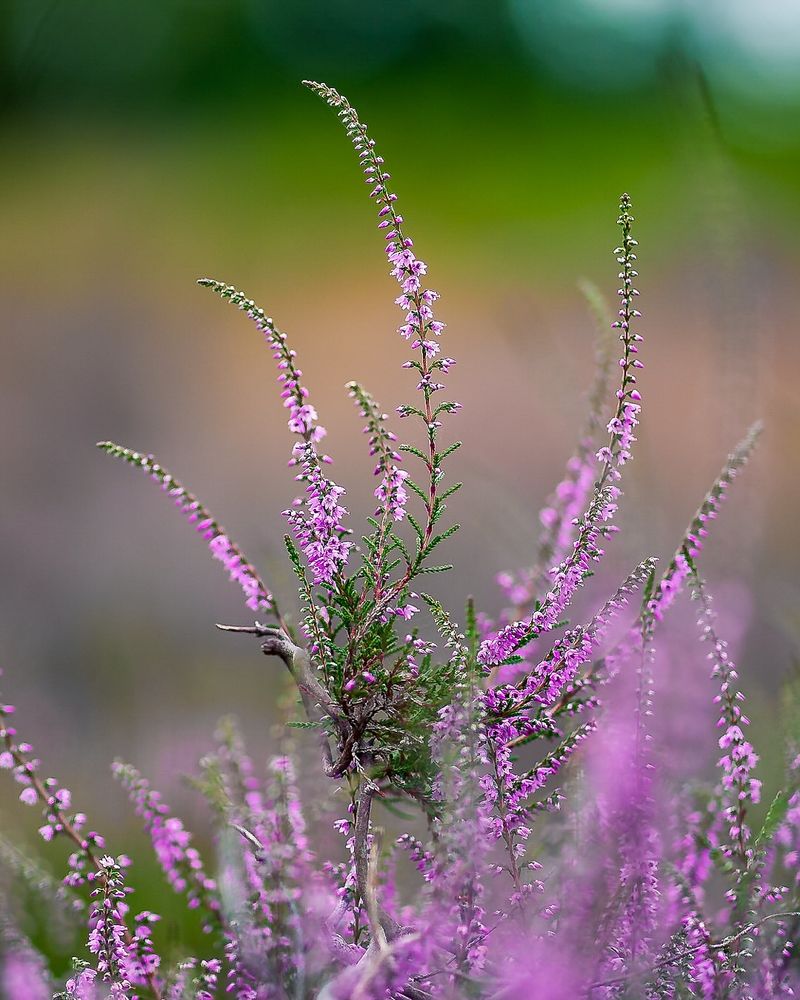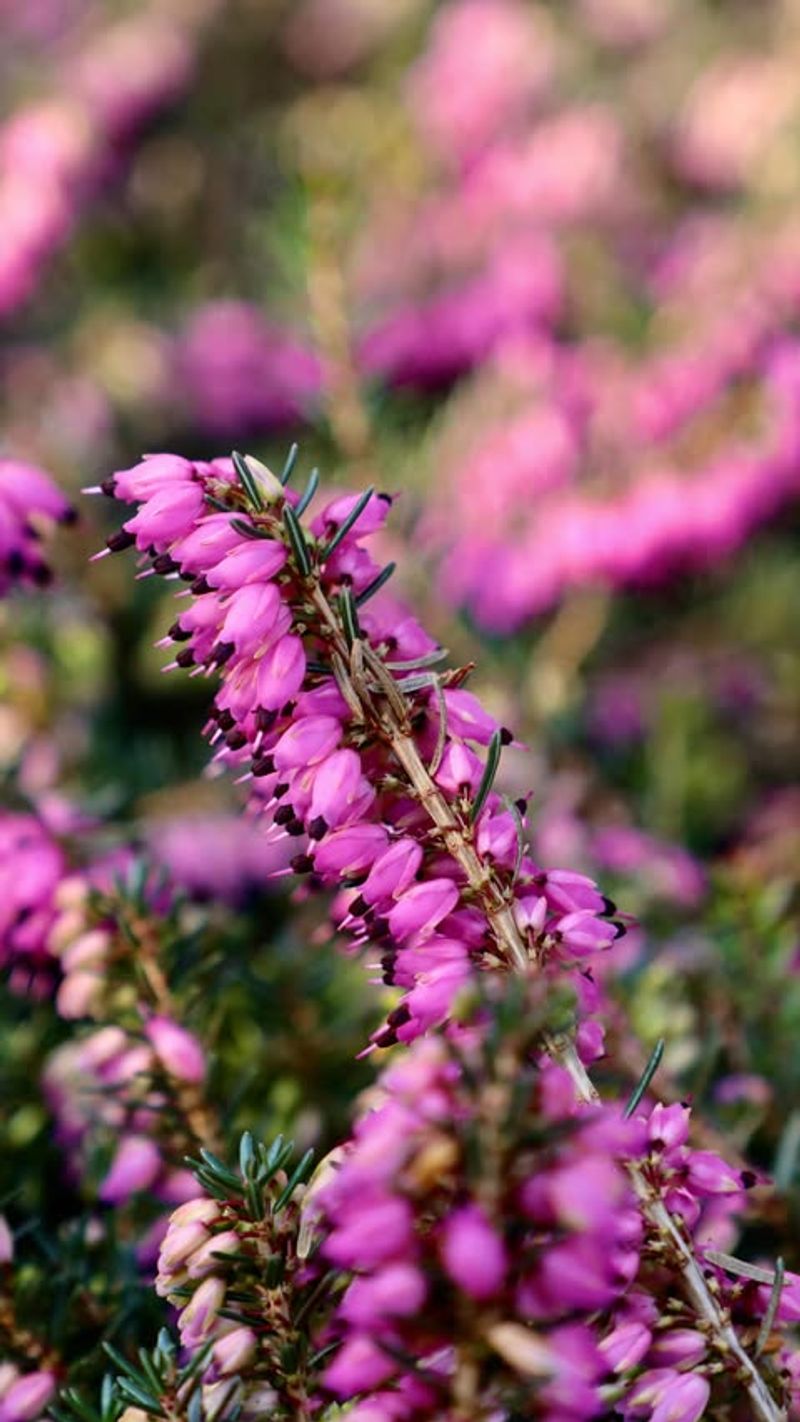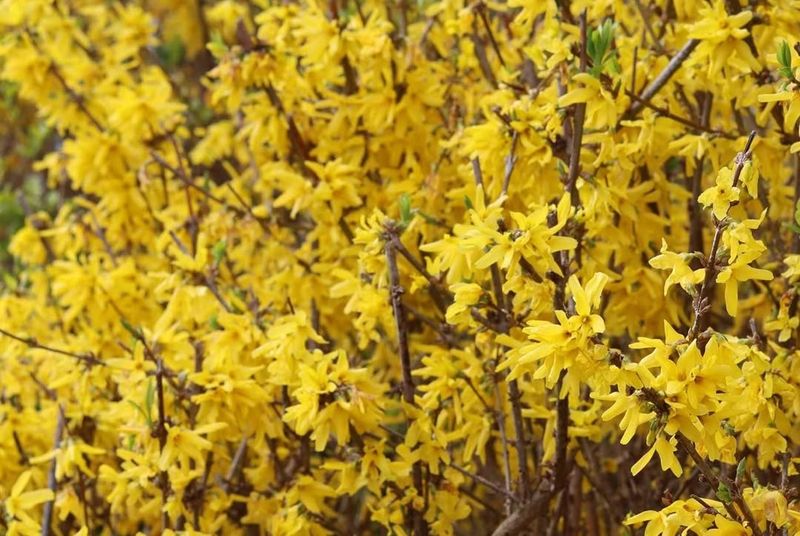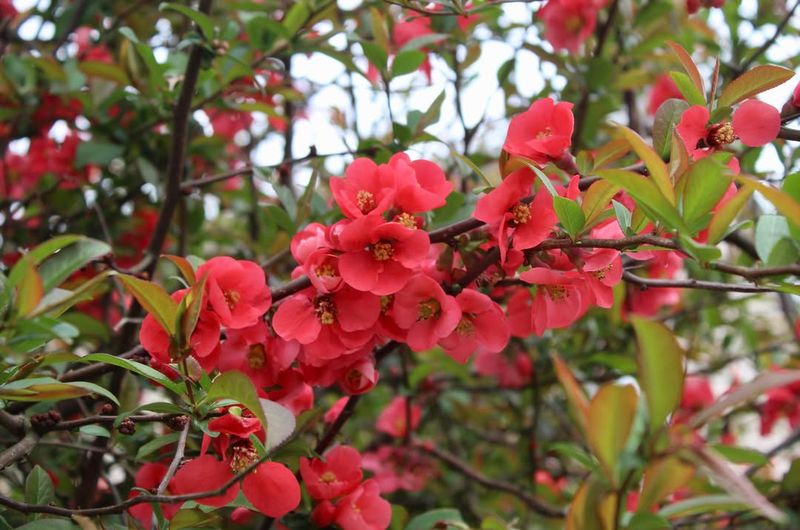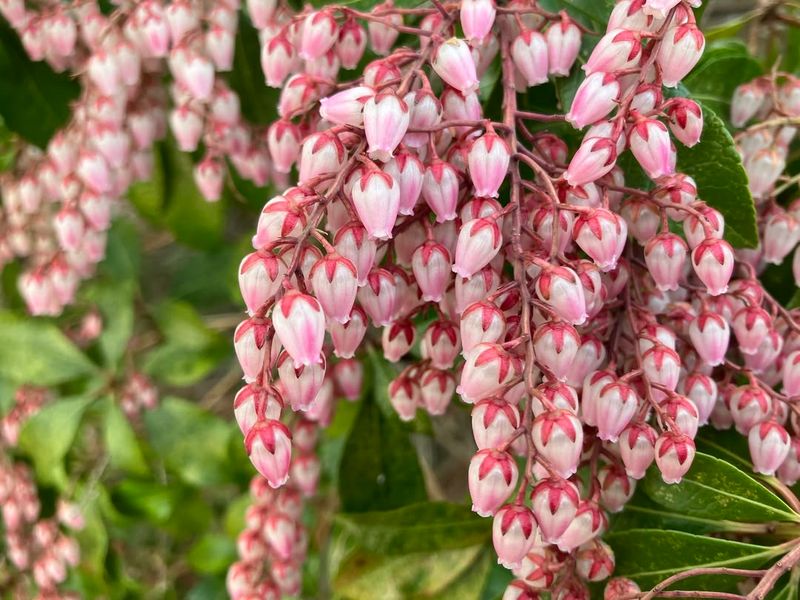Colorado winters can feel long and icy, but some shrubs refuse to let the cold dull their sparkle. I’ve planted a few that surprised me by pushing out color when everything else looked frozen in place.
They add a lift to the landscape during the months that usually feel the quietest. Their stubborn winter beauty is exactly what makes them so special in Colorado gardens.
1. Winterberry (Ilex verticillata)
Bright red berries light up this shrub like natural holiday decorations from November through February. Female plants produce the stunning fruit clusters that birds absolutely adore, creating a wildlife feeding station right in your Colorado yard.
Winterberry thrives in moist soil and partial shade, making it adaptable to various garden spots. The berries persist through harsh weather, providing constant visual interest when everything else looks dormant and gray.
2. Witch Hazel (Hamamelis)
Spidery yellow or orange flowers emerge on bare branches during January and February, defying Colorado’s frigid temperatures with remarkable resilience. The blooms release a sweet, spicy fragrance that drifts through cold air, surprising anyone who ventures outside.
This shrub grows slowly but rewards patience with decades of reliable winter color. Plant it near walkways or windows where you can appreciate its unusual blooms without braving the full force of winter weather.
3. Winter Jasmine (Jasminum nudiflorum)
Cascading green stems burst into cheerful yellow blossoms from December through March, bringing sunshine to the dreariest Colorado days. Unlike its fragrant cousins, this jasmine lacks scent but compensates with abundant flowers that appear before any leaves.
It works wonderfully as a ground cover on slopes or tumbling over retaining walls. The arching branches create a fountain effect, and the plant tolerates poor soil better than most flowering shrubs available.
4. Mahonia (Oregon Grape)
Clusters of bright yellow flowers appear in late winter, standing out against glossy evergreen leaves that often turn burgundy in cold weather. Mahonia adapts well to Colorado’s dry climate and handles shade better than most winter bloomers, making it incredibly versatile.
After flowering, blue-purple berries develop that attract songbirds throughout spring. The spiky, holly-like foliage provides year-round structure and texture, even when the plant isn’t actively blooming or fruiting.
5. Cornelian Cherry Dogwood (Cornus mas)
Tiny yellow flowers cover bare branches in late February, often pushing through the last of Colorado’s winter storms with impressive determination. This large shrub can eventually grow into a small tree, providing versatile landscaping options for different spaces.
Come summer, bright red edible fruits appear that make excellent jams and preserves. The plant tolerates urban pollution and drought conditions once established, making it practical for Front Range communities throughout Colorado.
6. Daphne (Daphne odora)
Few winter bloomers match the intoxicating fragrance that wafts from these pink and white flower clusters appearing in late winter. Even a single plant perfumes an entire Colorado garden, making those brief warm spells more enjoyable for everyone outdoors.
Daphne prefers well-drained soil and protection from harsh afternoon sun. Plant it near entryways or patios where you’ll frequently pass by and catch its amazing scent during February and early March.
7. Heather (Calluna vulgaris)
Low-growing mounds of needle-like foliage produce tiny bell-shaped flowers in shades of pink, purple, and white throughout winter months. Heather loves Colorado’s acidic soils and cool temperatures, thriving where many other plants struggle to establish themselves.
Different varieties bloom at different times, so planting several types extends the flowering season significantly. The evergreen foliage provides texture and color even between bloom periods, creating reliable interest throughout changing seasons.
8. Winter Heath (Erica carnea)
Tubular flowers in shades ranging from white to deep pink cover compact plants from January through April across Colorado landscapes. Winter heath tolerates more alkaline soils than regular heather, making it better suited for many Front Range locations with challenging conditions.
It forms dense mats that suppress weeds while providing evergreen coverage throughout the year. Bees emerge on warmer winter days specifically to visit these early flowers, supporting pollinator populations when few resources exist.
9. Camellia (Camellia japonica)
Large, rose-like blooms in pink, red, or white emerge during late winter, creating dramatic focal points in protected Colorado garden spots. While camellias prefer milder climates, certain hardy varieties survive in sheltered microclimates along the Front Range with proper care and placement.
Plant them on north or east-facing walls to prevent premature budding during warm spells. The glossy evergreen leaves provide year-round beauty, and established plants become tougher with each passing winter season.
10. Forsythia (Forsythia x intermedia)
Brilliant yellow flowers explode along arching branches in late February or early March, signaling winter’s end throughout Colorado neighborhoods. The blooms appear before leaves, creating spectacular golden fountains that lift spirits after months of dormancy and cold.
Forsythia grows quickly and tolerates poor soil, making it ideal for filling large spaces affordably. Cut branches brought indoors in January will bloom early, providing cheerful arrangements weeks before outdoor flowers appear naturally.
11. Flowering Quince (Chaenomeles speciosa)
Vibrant red, orange, or pink blossoms cover thorny branches from late February through March, creating stunning displays against Colorado’s lingering snow. The flowers appear on bare wood, making the color impact even more dramatic without competing foliage to distract attention.
Small apple-like fruits develop after flowering that work well in preserves and jellies. Flowering quince tolerates clay soils and urban conditions exceptionally well, thriving in challenging sites where more finicky shrubs would struggle significantly.
12. Pieris (Pieris japonica)
Drooping clusters of white or pink bell-shaped flowers dangle like tiny lanterns from evergreen branches starting in late winter. New growth emerges in brilliant shades of red or bronze, providing two seasons of color that Colorado gardeners really appreciate.
Pieris prefers acidic soil and consistent moisture, making it perfect for shaded areas with amended planting beds. The glossy leaves remain attractive throughout the year, and the plant maintains a tidy, compact shape without requiring frequent pruning or maintenance.

